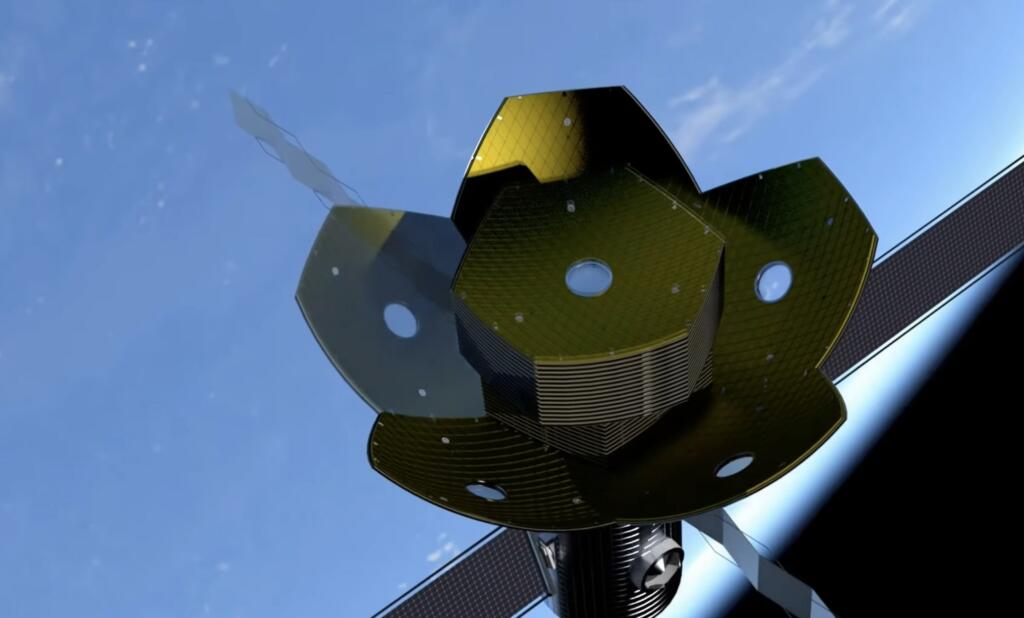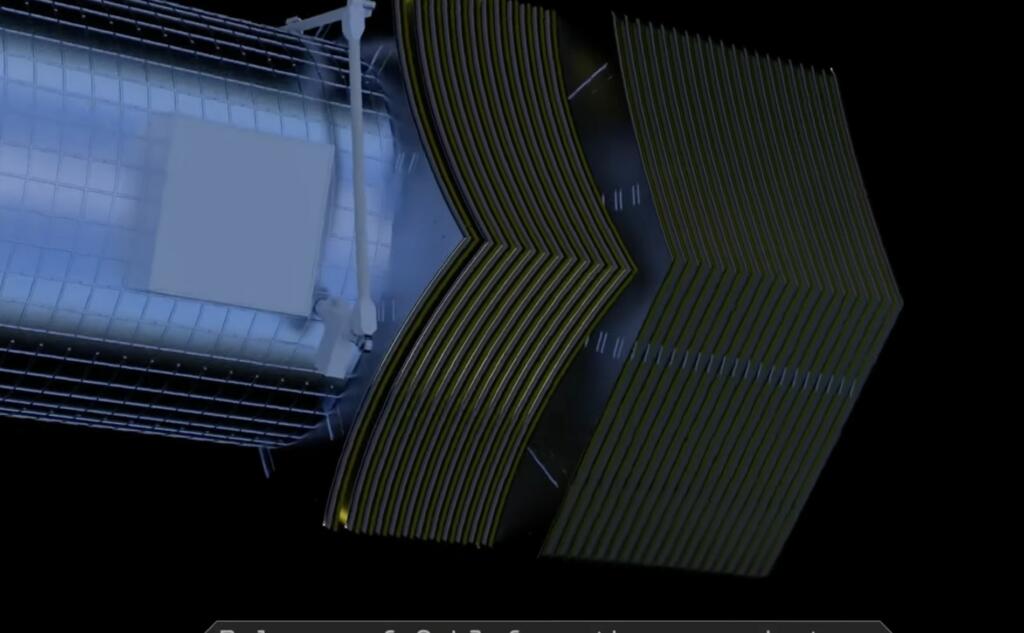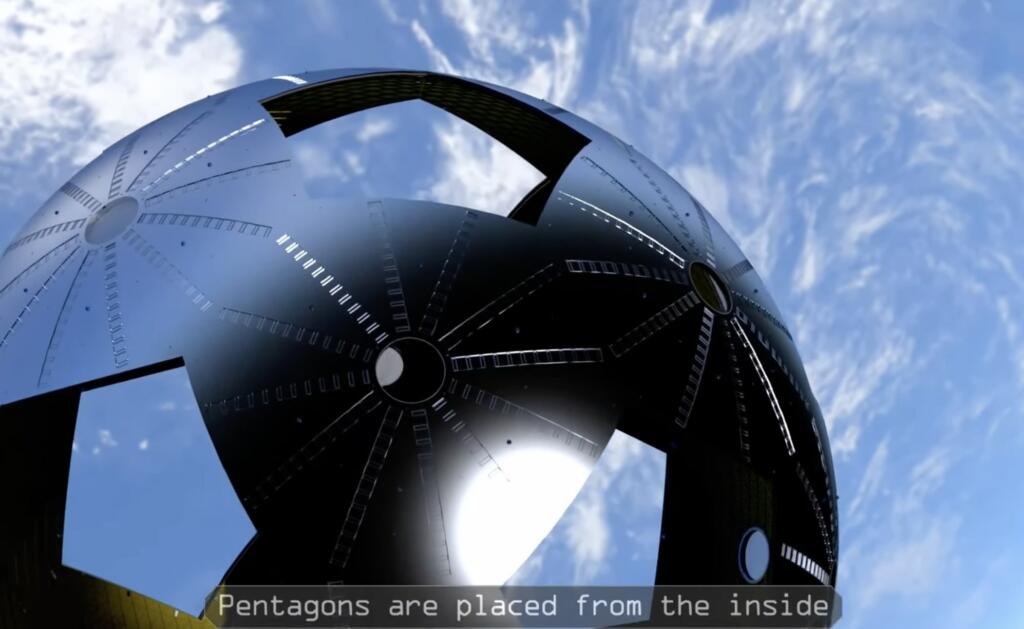NASA is working with seven U.S. companies on next generation Space Station designs. ThinkOrbital, Vast and Sierra Space/Blue Origin have interesting designs. NASA is also talking to SpaceX and Northrop Grumman and Voyager/Nanoracks.
Think Orbital will use a CanadaArm to assemble hexagonal and pentagram pieces that will be stacked during launch. They will be assembled into large sphere shaped space stations as seen above.
ThinkOrbital is collaborating with NASA on the development of ThinkPlatforms and CONTESA (Construction Technologies for Space Applications). ThinkPlatforms are self-assembling, single-launch, large-scale orbital platforms that facilitate a wide array of applications in low Earth orbit, including in-space research, manufacturing, and astronaut missions. CONTESA features welding, cutting, inspection, and additive manufacturing technologies, and aids in large-scale in-space fabrication.





Blue Origin is collaborating with NASA to develop integrated commercial space transportation capability that ensures safe, affordable, and high-frequency US access to orbit for crew and other missions. Blue Origin and Sierra Space has gotten $130 million from NASA to develop its Blue Reef concept.


Northrop Grumman is collaborating with NASA on the company’s Persistent Platform to provide autonomous and robotic capabilities for commercial science research and manufacturing capabilities in low Earth orbit.
Sierra Space is collaborating with NASA for the development of the company’s commercial low Earth orbit ecosystem, including next-generation space transportation, in-space infrastructure, and expandable and tailorable space facilities providing a human presence in low Earth orbit.
Vast is collaborating with NASA on technologies and operations required for its microgravity and artificial gravity stations. This includes the Haven-1 commercial destination, which will provide a microgravity environment for crew, research, and in-space manufacturing, and the first crewed mission, called Vast-1, to the platform.
In Feb, 2023, Vast acquired space startup Launcher. Launcher, headquartered in Hawthorne, California, was founded in 2017 by Max Haot. All of Launcher’s team members joined forces with Vast’s fast-growing team. The combined team of over 120 employees occupy the recently announced 115,000 square-foot Vast headquarters in Long Beach later this year. Vast is continuing the Orbiter space tug and hosted payload products as well as its staged combustion rocket engine E-2, and will focus on liquid rocket engine products instead of developing its own launch vehicle. Orbiter will continue to support current and future payload customers.
By 2025, Space Startup Vast plans to launch its first space station module. Vast, a pioneer in space habitation technologies, plans to launch the world’s first commercial space station, called Haven-1. It is scheduled to launch on a SpaceX Falcon 9 rocket to low-Earth orbit no earlier than August 2025, Haven-1 will initially act as an independent crewed space station prior to being connected as a module to a larger Vast space station currently in development.
In the 2030s, Vast wants a 100-meter-long multi-module spinning artificial gravity space station launched by SpaceX’s Starship transportation system. In support of this, Vast will explore conducting the world’s first spinning artificial gravity experiment on a commercial space station with Haven-1.
Vast is selling up to four crewed seats on the inaugural mission to Haven-1. Expected customers include domestic and international space agencies and private individuals involved in science and philanthropic projects.
By 2040, Space Startup Vast plans to be operating dozens of artificial gravity and zero gravity space stations across our solar system, optimized for human physiology and psychology, as well as off-planet business. These will enable every endeavor imaginable as humanity expands across the solar system.







Voyager Space and Nanoracks have an inflatable station design.



Brian Wang is a Futurist Thought Leader and a popular Science blogger with 1 million readers per month. His blog Nextbigfuture.com is ranked #1 Science News Blog. It covers many disruptive technology and trends including Space, Robotics, Artificial Intelligence, Medicine, Anti-aging Biotechnology, and Nanotechnology.
Known for identifying cutting edge technologies, he is currently a Co-Founder of a startup and fundraiser for high potential early-stage companies. He is the Head of Research for Allocations for deep technology investments and an Angel Investor at Space Angels.
A frequent speaker at corporations, he has been a TEDx speaker, a Singularity University speaker and guest at numerous interviews for radio and podcasts. He is open to public speaking and advising engagements.


Seeing Angry Astronaut videos on my favorite science news site warms my heart.